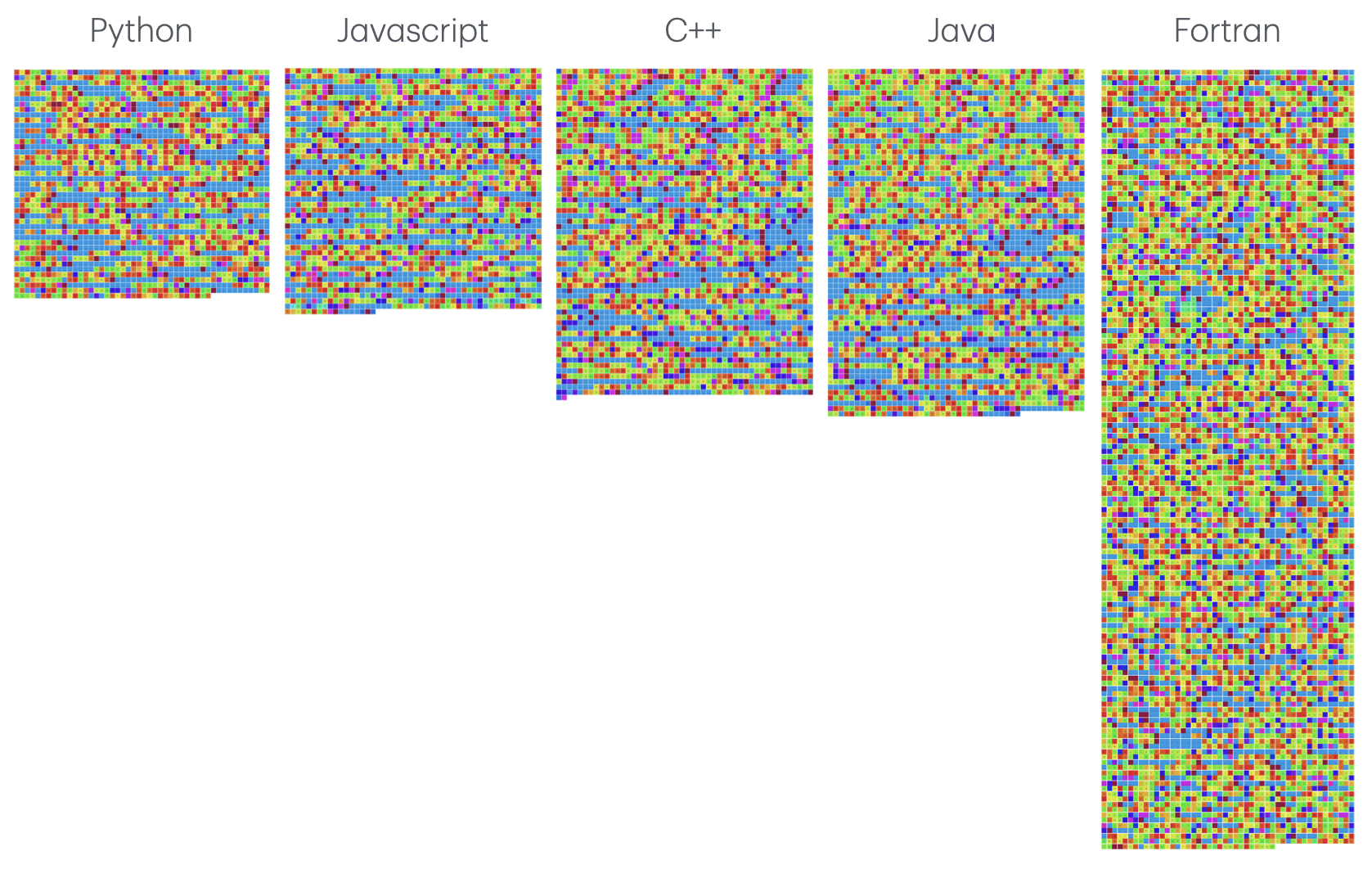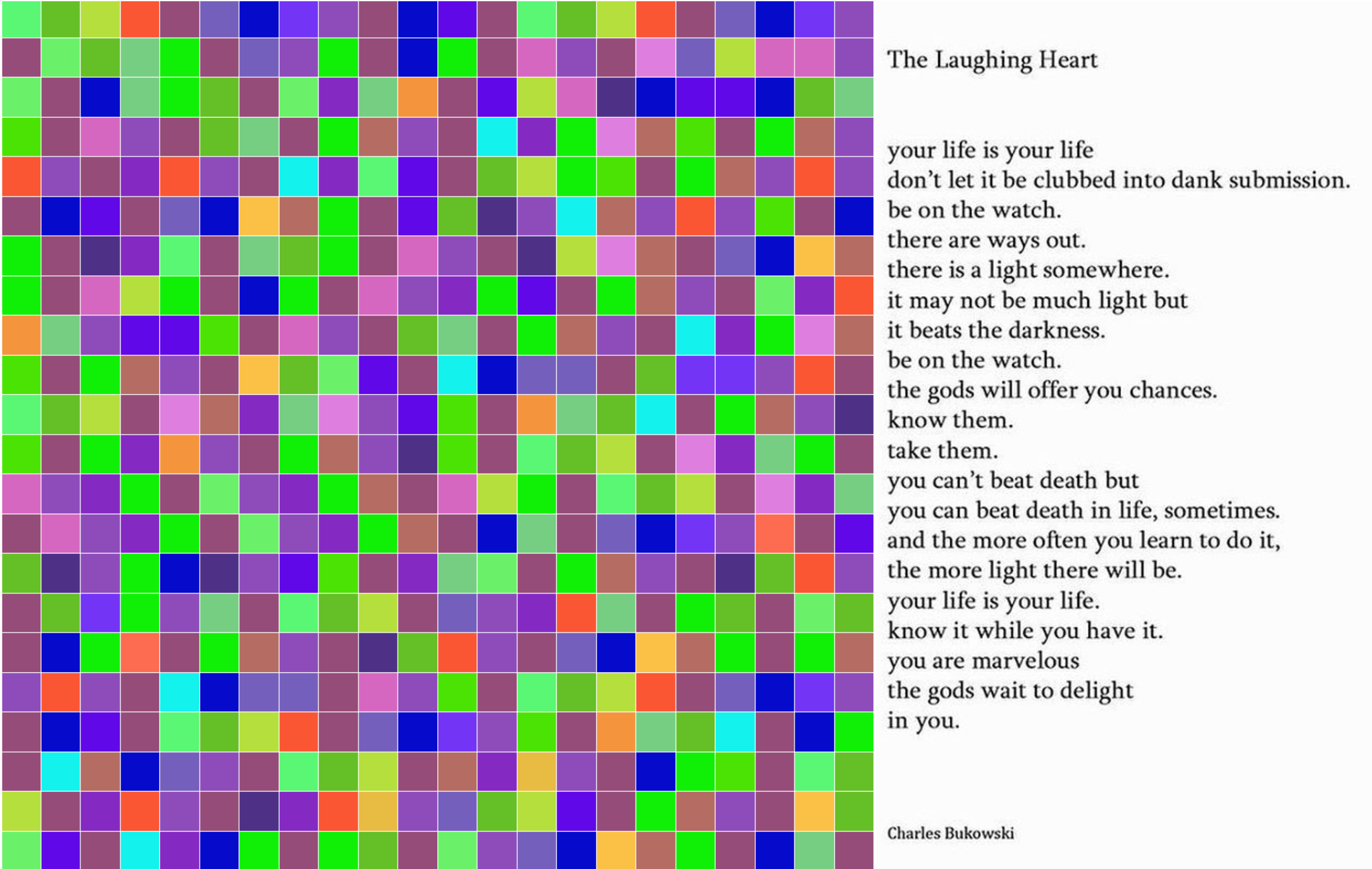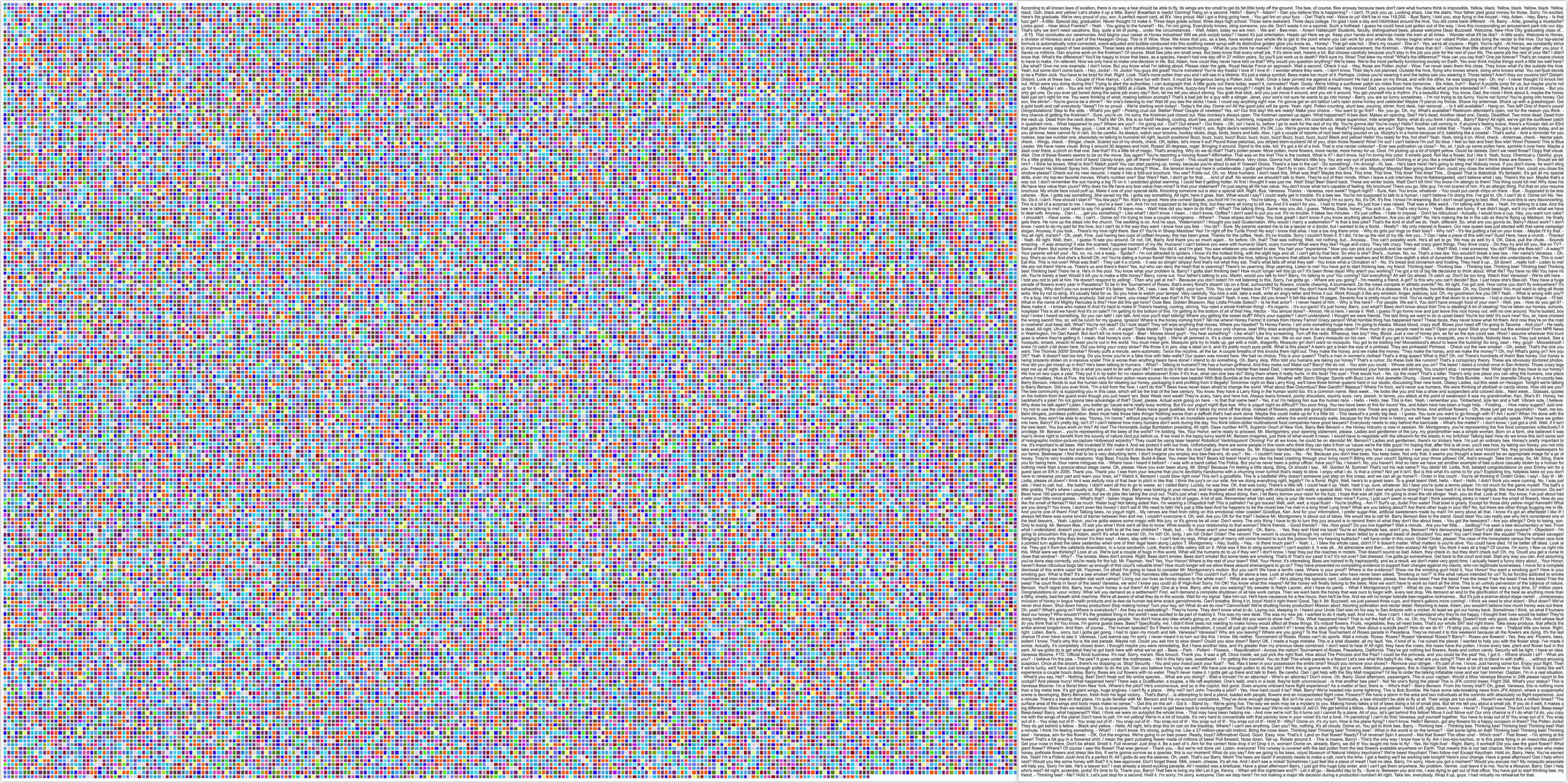Visualizing Programming Languages
In the world of programming, we often discuss the differences between programming languages in terms of features, syntax, and performance. But what if we could actually try and see these differences? Recently, I thought of a visualization technique that converts code into color patterns, offering a unique way to compare programming languages visually.
The Experiment
I took a library management system implemented in five different programming languages - Python, JavaScript, Java, C++, and Fortran - and converted each character of code into a colored pixel. You can find a demo of the visualization at the bottom of the page! The result was intriguing with each language producing a distinct visual pattern, with spaces represented as blue pixels. This simple mapping reveals some interesting insights about code structure and language design.

What We Can See
Code Structure (Whitespaces)
The blue patterns in each visualization represent spaces - including indentation, line breaks, and general code formatting. These patterns tell a fascinating story about each language’s approach to structure.
- Python and JavaScript show compact, efficient patterns with minimal blue space, reflecting their modern, concise syntax.
- Java and C++ display remarkably similar patterns, with more pronounced blue sections showing their shared heritage and similar formatting conventions.
- Fortran stands out with long, structured blue stripes, visualizing its module-based system and more rigid formatting requirements.
Size Matters
The relative sizes of each visualization are particularly telling.
- Python and JavaScript produce the smallest “fingerprints,” showcasing their reputation for conciseness.
- Java and C++ create moderately larger patterns, reflecting their more verbose nature.
- Fortran generates the largest visualization, demonstrating how its explicit typing and module structure require more lines of code.
What This Tells Us About Language Evolution
This visual representation perfectly illustrates the evolution of programming languages. You can literally see how modern languages like Python and JavaScript have moved toward conciseness, while still maintaining readable structure. The striking similarity between Java and C++’s patterns reflects their shared design philosophy and syntax heritage.
Beyond the Blue
While this experiment focused primarily on spacing patterns, it raises interesting possibilities for deeper analysis. Imagine mapping different colors to:
- Keywords and reserved words
- Variable declarations
- Function calls
- Comments and documentation
- String literals
Such mappings could provide even more insights into how different languages approach common programming concepts.
Conclusion
This visualization technique offers a unique perspective on programming languages, turning abstract concepts of syntax and structure into tangible, visual patterns. It demonstrates not just how languages differ in their approach to solving problems, but how their very structure reflects their design philosophy and intended use.
The next time someone asks about the differences between programming languages, perhaps showing them these “code fingerprints” would be more illuminating than explaining syntax rules. After all, sometimes you need to see it to believe it.
Additional Content
It is natural to extend this concept beyond programming languages to natural language texts. As an experiment, I applied the same character-to-color mapping to Charles Bukowski’s poem “The Laughing Heart”. While it is difficult to pick out specific patterns in the current poem, with a sufficient number of poetry samples, patterns that might reflect poetic structure - the rhythm, line breaks, and stanza organization might appear as distinct color formations, quite different from the patterns we saw in code.

And just for gags, I also visualized the entire script of the 2007 animated film “Bee Movie”. The visualization resembles the nostalgic CRT television static. Larger texts might create more uniform, noise-like patterns when visualized this way.

I encourage you to explore these patterns yourself using the interactive demo applet below. Try visualizing different types of text - from haikus to novels - and see what patterns emerge. What might the visual “fingerprint” of your favorite piece of writing look like?